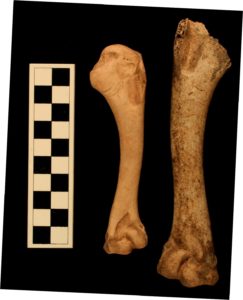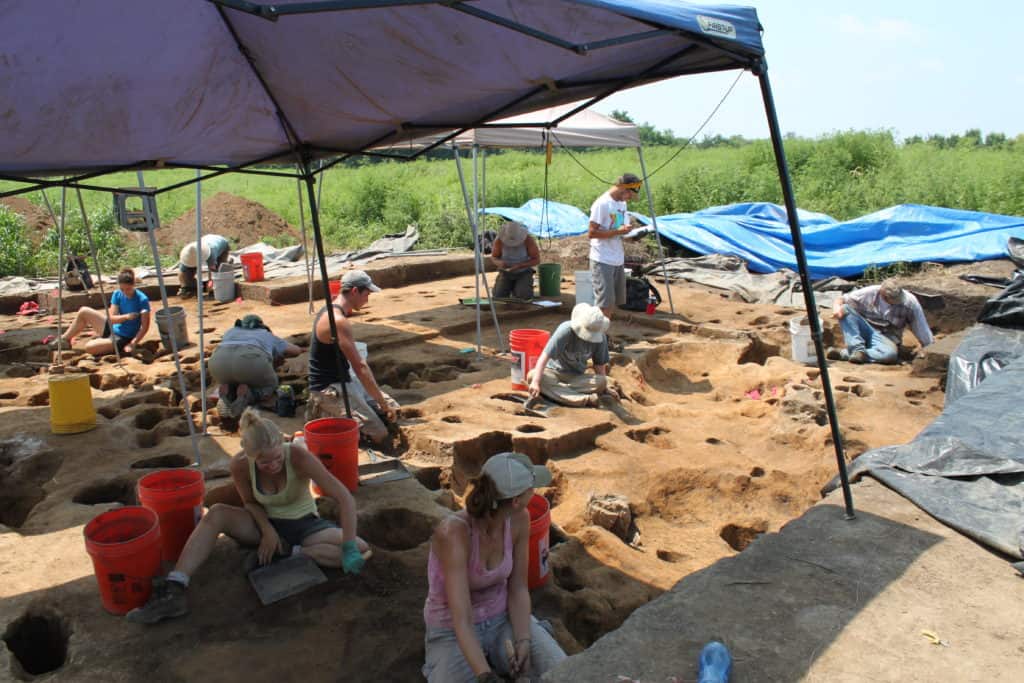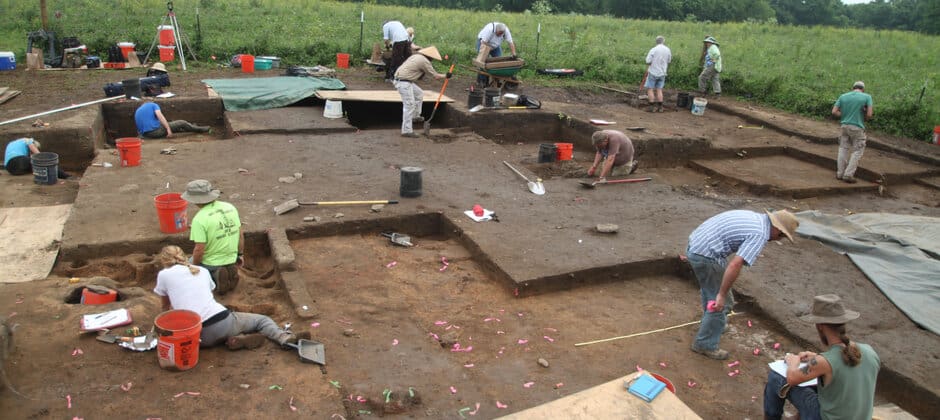Share this article
WSB: Fort Ancient people managed turkeys centuries ago
About 700 years ago, the Fort Ancient people flourished in parts of the Ohio River valley in Kentucky and its surrounding states. The Indigenous culture had a number of settlements in the area, including one archaeologists recently conducted work on called Fox Farm, a relatively long-lasting settlement in Mason County, Kentucky dating from roughly 1300-1650.
Their goal was to learn more about Fox Farm’s history, site organization and other factors. But in the course of their excavations, they recovered hundreds of eastern wild turkey (Meleagris gallopavo) bones. After analyzing them, the scientists revealed that these Fort Ancient people heavily managed the population of these fowl that lived there.
“We can’t assume that the environment that the first European immigrants encountered in North America was pristine,” said Gwynn Henderson, education director at the Kentucky Archaeological Survey at the Western Kentucky University and one of the authors of a study published recently in the Wildlife Society Bulletin. “It had been managed for thousands and thousands of years.”

Female turkey leg bones (left) are a little smaller than male leg bones (right). Credit: Hayward Wilkerson
Archaeologists working in the U.S. Southwest have suggested that ancestral Puebloan groups had domesticated turkeys, and the archaeologists working at Fox Farm wanted to see if the turkey bones they found also contained evidence of turkey domestication.
To find answers to this question, the researchers examined the stable isotope ratios preserved in some of the numerous turkey bones recovery from the Fox Farm site. Stable isotope analysis can reveal the levels and types of elements like nitrogen and carbon, which shows the type of food that the animals were eating before they died.
The diet of animals can suggest whether they were domesticated. If they eat the same things as humans—in the case of Fort Ancient people, this would mean a lot of corn—then humans might have fed them. The presence of corn in their diet isn’t a certainty, though, since wild turkeys could have been raiding Fort Ancient crops.
But the analysis of 80 bone samples revealed that the turkeys that met their end at Fox Farm weren’t eating corn at all, suggesting they weren’t domesticated.
“East of the Mississippi we are not seeing the kind of consumption of corn by turkeys that you see in the Southwest,” said David Pollack, director of the Kentucky Archaeological Survey and a co-author of the study.
By examining the differences in the size of male and female turkey bones, the archaeologists also found that there were about twice as many male as female turkeys in the remains recovered from Fox Farm, indicating the people were preferentially hunting males.
“More males are being taken—that’s one particular way of managing turkeys,” said Bruce Manzano, a zooarchaeologist at the Kentucky Archaeological Survey.

Fort Ancient people lived at Fox Farm longer than many other Fort Ancient settlements.
Credit: Kentucky Archaeological Survey
Pollack added that this finding contrasted with those from a couple of other nearby Fort Ancient sites that weren’t occupied as long as Fox Farm. These sites had roughly equal amounts of male and female turkey remains.
Henderson said that this is one reason that Fox Farm is unique among Fort Ancient sites. Many of the other villages were only occupied for 25 years or so, which could suggest that the people would move around once the resources in a given area began to dry up. But at Fox Farm, the people learned how to harvest turkeys more sustainably, which could explain why the village persisted for more than three centuries. She said that other lines of evidence support this, such as the sustainable harvest of black locust plants that they used for building.
Manzano added that other evidence shows over time Fox Farm hunters focused less on younger deer under 2.5 years old and more on older deer. This helped sustain the local deer population.
“All that contributed to them being able to stay there for a longer period and time,” Pollack said.
This article features research that was published in a TWS peer-reviewed journal. Individual online access to all TWS journal articles is a benefit of membership. Join TWS now to read the latest in wildlife research.
Header Image:
Researchers excavate at Fox Farm, a Fort Ancient settlement dating to roughly 1300-1650.
Credit: Kentucky Archaeological Survey








